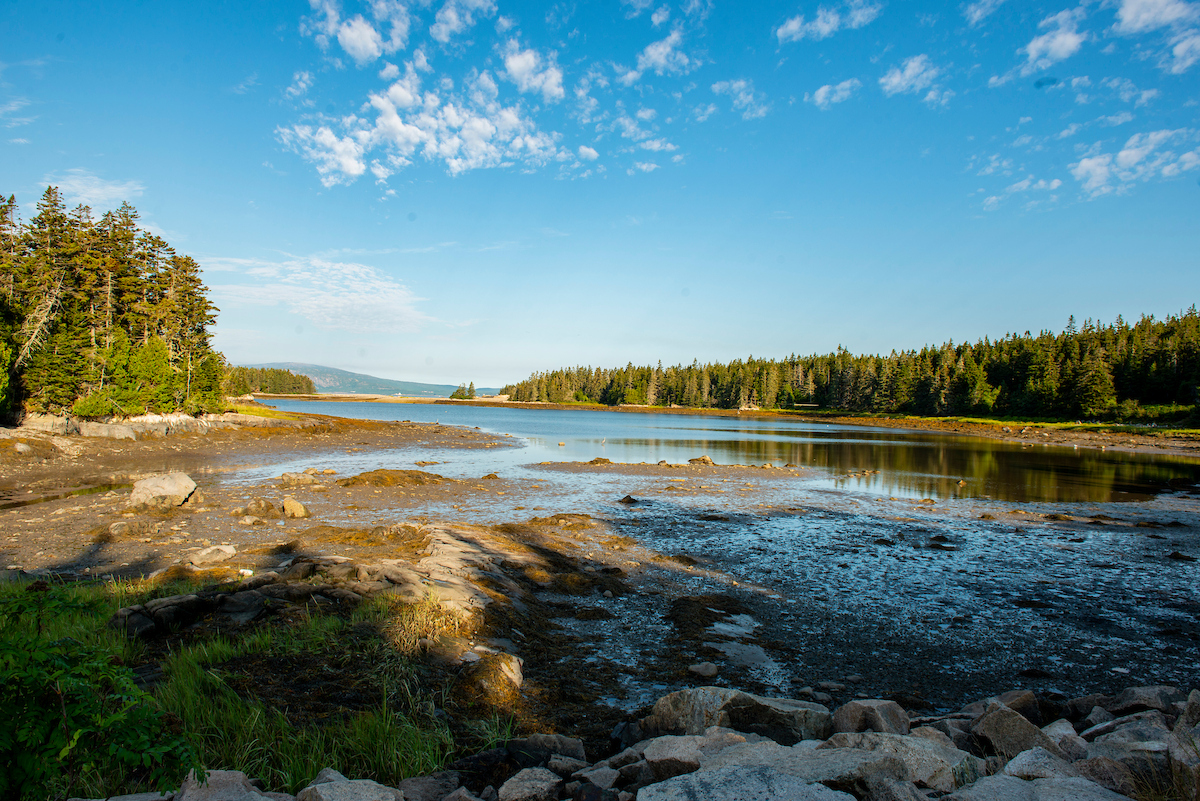common law and statutes
A concise overview of the common law and statutory framework that governs shoreline ownership and public access in Maine.

Who has rights to the shoreline in Maine?
In Maine, the answer is usually a combination of the following:
Private property holders may own the shore all the way down to the low water mark. The state or town may own shoreline areas including beaches. The public has certain legal interests in the shoreline, even where a private owner holds the legal title. The public does retain access to the intertidal area for the purposes of fishing, fowling and navigation regardless of who holds the title to the land. This is granted to the public by the Public Trust Doctrine and a colonial ordinance. For each space and use of a space, there is a balance between public and private rights.
What are background legal principles governing coastal land ownership and access rights?
Maine is one of only a few states (DE, MA, ME, NH, PA, VA) in which coastal property owners own land out to the mean low tide line as defined in the Colonial Ordinance of 1641-47. These ownership interests are subject to a centuries- old public easement for “fishing, fowling and navigation”. This means that even though private coastal land owners may own the land to the low tide line, the public retains the right to fish, fowl, or navigate in the intertidal area (between the mean high tide line and mean low tide line). In most other coastal states this intertidal land is owned by the state in public trust for the public under the public trust doctrine, which you can read more about below.
The right to own property and exclude others from it is a fundamental feature of colonial U.S. law. Under Maine common law, coastal property owners may prevent people from gaining access to the shoreline of their land. Gaining unauthorized access- either perpendicularly or horizontally to the shore- may be trespassing for which one may have charges brought up against them in a court of law.
The government has the authority under its police powers to make laws protecting the welfare of its citizens, including regulating lands next to beaches and shores. Under the public trust doctrine, the government is obliged to act on behalf of the public to protect publicly- owned submerged lands below the mean low tide line, and publicly owned natural resources such as fish, shellfish, and seaweed that might be harvested from the shore.
The U.S. Constitution and many state constitutions also give the government the right to take private property under the power of eminent domain but only if the landowner receives appropriate compensation. Sometimes the government’s attempts to merely regulate behavior on or use of land goes so far as to amount to a “taking” requiring the government to pay the landowner for the lost value of the land. You can read more about eminent domain and takings here.
Who owns the shore in Maine?
Maine is one of only a few states in which coastal property owners can own land out to the mean low tide line. These ownership interests are subject to a centuries-old public easement allowing the public to use the intertidal zone for the limited purposes of “fishing, fowling, and navigation”. At present, this does not legally include public use for recreational purposes.
In most other coastal states the intertidal land is owned by the state in trust for the public under the public trust doctrine. This generally entitles the public to use the intertidal zone for recreational purposes as well as such things as fishing and navigation.
What state and federal statutes are relevant to access issues?
State Statutes:
- Natural Resource Protection Act
- Maine’s Landowner Liability Law
- Coastal Management Policies Act
- Mandatory Shoreline Zoning Act
- Subdivision Review Act
- Submerged Lands
Relevant tax laws:
- Maine Current Use Taxation for Working Waterfront
- About the program
- Designed to prevent the conversion of waterfront land that is used for or supports commercial fishing activities. Owners of working waterfront property may apply to have their properties valued according to their current use as working waterfront. In exchange, the landowner must maintain the property for working waterfront uses only, or risk a financial penalty. The reduced valuation and associated tax reduction apply only to the land, not to any structures or equipment on the property. This program defines working waterfront land as a parcel or portion of a parcel of land abutting tidal waters or is loathed in the intertidal zone (located between the high and low water mark) the use of which is more than 50% related to providing access to or in support of the conduct of commercial fishing activities.
- Maine Open Space Taxation
- About the program
- Designed to prevent the conversion of open space land to more intensive uses as a result of economic pressure. Parcels enrolled as Open Space are assessed at current use with additional reductions possible for those parcels allowing public access.
Federal Statutes:
Laws affecting public access
- US Coastal Zone Management Act
Legal principles and doctrines
- The Public Trust Doctrine
- Presumption of Permission
